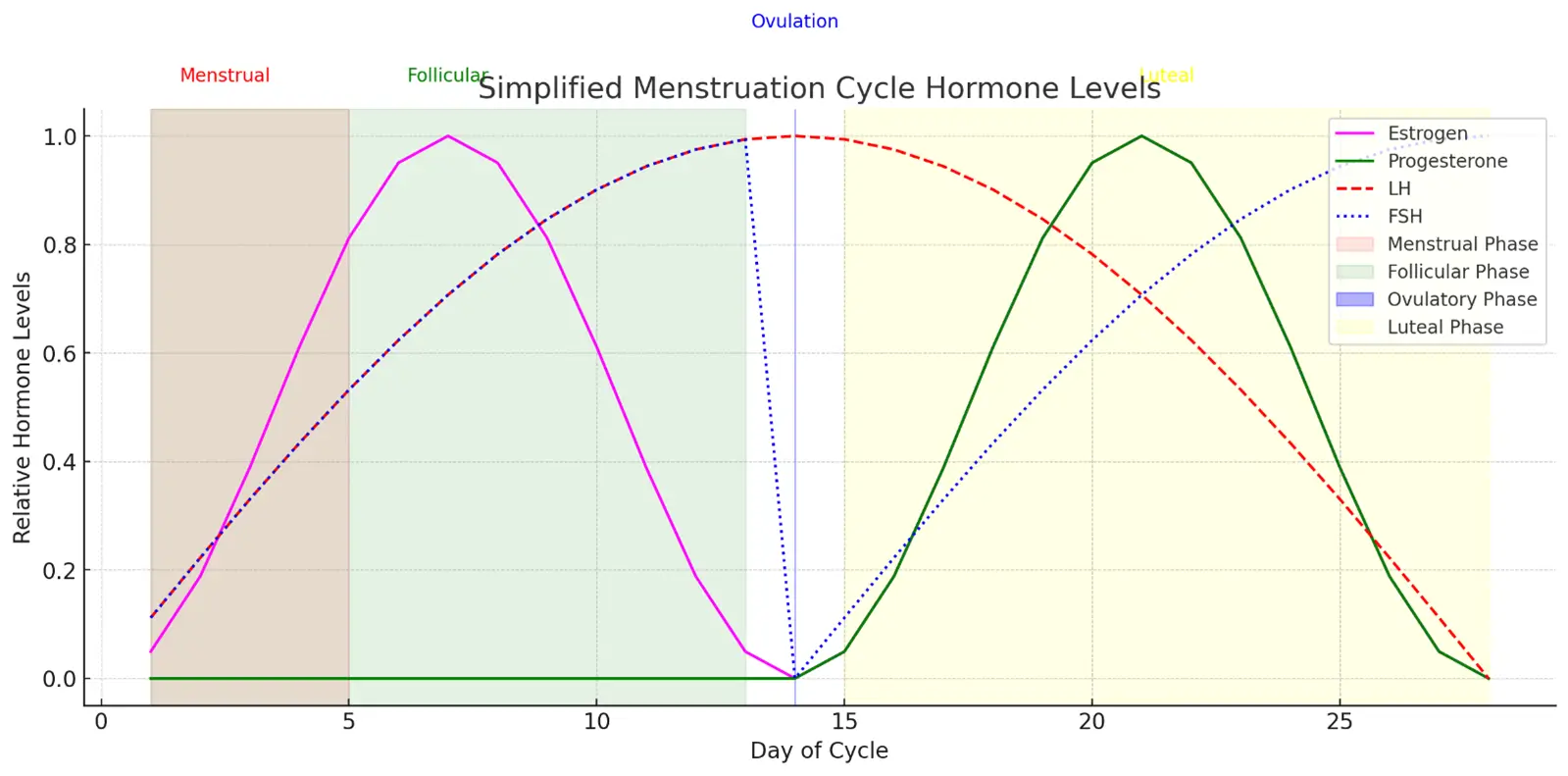- Menstruation is the cyclic shedding of the uterine lining (endometrium) in response to hormonal fluctuations that occur during a woman’s menstrual cycle.
- The cycle is typically divided into four phases:
1. Menstrual Phase (Days 1-5):
- The menstrual phase marks the beginning of the cycle.
- Hormonal changes: Decreasing levels of estrogen and progesterone from the previous cycle cause the endometrial lining to shed.
- Menstrual bleeding: This shedding results in menstrual bleeding, which typically lasts 3-7 days.
This is a sample ad placement!
2. Proliferative (Follicular) Phase (Days 6-14):
- This phase is characterized by the growth of follicles in the ovaries and the repair and thickening of the endometrium.
-
Follicle-Stimulating Hormone (FSH) Secretion:
- The hypothalamus releases gonadotropin-releasing hormone (GnRH), which stimulates the anterior pituitary gland to secrete FSH.
- FSH stimulates the growth and development of ovarian follicles, each containing an immature egg (oocyte).
-
Estrogen Production in menstruation:
- As the follicles develop, they secrete estrogen.
- Estrogen promotes the repair and thickening of the endometrial lining.
- Rising estrogen levels inhibit the further release of FSH, allowing a single dominant follicle to mature.
-
Luteinizing Hormone (LH) Surge:
- High levels of estrogen eventually trigger a surge in LH secretion from the anterior pituitary gland.
- The LH surge is responsible for initiating ovulation.
This is a sample ad placement!
3. Ovulation Phase of Menstruation (Day 14):
- Ovulation is the release of a mature egg from the dominant ovarian follicle into the fallopian tube.
- The LH surge triggers enzymatic reactions that cause the dominant follicle to rupture and release the egg.
- The egg is now available for fertilization by sperm.
4. Luteal Phase of Menstruation (Days 15-28):
-
- This phase begins after ovulation and prepares the body for a potential pregnancy.
-
Corpus Luteum Formation:
- After the follicle ruptures and releases the egg, the remnants of the follicle transform into the corpus luteum.
- The corpus luteum is a temporary endocrine structure that secretes both progesterone and estrogen.
-
Progesterone Production:
- The corpus luteum primarily secretes progesterone, which stabilizes and thickens the endometrial lining, making it more receptive to a fertilized egg.
- Progesterone also inhibits further release of FSH and LH to prevent additional follicle development.
-
End of the Luteal Phase:
- If fertilization does not occur, the corpus luteum degenerates around days 22-24.
- The drop in progesterone and estrogen levels results in the breakdown of the endometrial lining.
- This breakdown leads to menstruation, marking the start of a new cycle.
This is a sample ad placement!

Thank you for reading from Firsthope's notes, don't forget to check YouTube videos!
